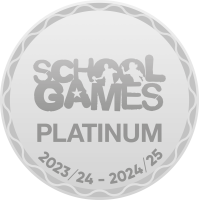Revised Bloom's Taxonomy & Our Curriculum
Background Information
In 1956, the American academic Benjamin Bloom along with a number of other colleagues published a framework for categorising educational goals. It was titled, “Taxonomy of Educational Objectives” but is more familiarly known as Bloom’s Taxonomy. This framework has been applied by generations of teachers and in their teaching.
The Revised Taxonomy 2001
In 2001, a group of cognitive psychologists, curriculum theorists and instructional researchers, and testing and assessment specialists published a revision of Bloom’s Taxonomy with the title “A Taxonomy for Teaching, Learning, and Assessment”. The taxonomy refers to levels of cognitive process which can be seen in the diagram. Applying, analysing, evaluating and creating can be referred to as ‘higher order thinking skills’ which require a greater level of thought and engagement in the learning process.
In the revised taxonomy, knowledge is at the basis of these six cognitive processes but its authors created a separate taxonomy of the types of knowledge used in cognition:
|
Knowledge type |
Description |
|
Factual Knowledge
|
Knowledge of terminology Knowledge of specific details and elements |
|
Conceptual Knowledge
|
Knowledge of classifications and categories Knowledge of principles and generalizations Knowledge of theories, models, and structures |
|
Procedural Knowledge
|
Knowledge of subject-specific skills and algorithms Knowledge of subject-specific techniques and methods Knowledge of criteria for determining when to use appropriate procedures |
|
Metacognitive Knowledge
|
Strategic Knowledge Knowledge about cognitive tasks, including appropriate contextual and conditional knowledge Self-knowledge |
|
|
Our Curriculum
We utilise the Revised Bloom's Taxonomy within our curriculum in a number of ways. Firstly, the taxonomy provides our teaching staff with a framework that supports their questioning skills and techniques across the whole curriculum. Lessons are often supported by higher level questioning which makes our children think and as a result, become more inquisitive learners.
We also utilise Bloom's separate taxonomy of knowledge types to provide us with a framework to support subject progression across the whole school. Each subject has carefully considered how it can use this taxonomy. Not each subject uses the same approach but we feel that this mirrors the different pedagogical demands of different subject disciplines. For example, there is much more procedural knowledge to learn in a practical subject like Physical Education. Whereas, in History or Geography, a greater level of factual and conceptual knowledge is required.
In our curriculum, we feel that metacognitive knowledge is all-encompassing. We refer to metacognitive knowledge throughout the learning process in order to make our pupils excellent learners. Therefore, we believe that this doesn’t need to be planned for in the same way that factual, conceptual and procedural knowledge requires.
We have utilised these headings to provide a framework for teaching knowledge and skills progressions across year groups and in all subjects. These documents can be viewed by browsing each individual subject page.













